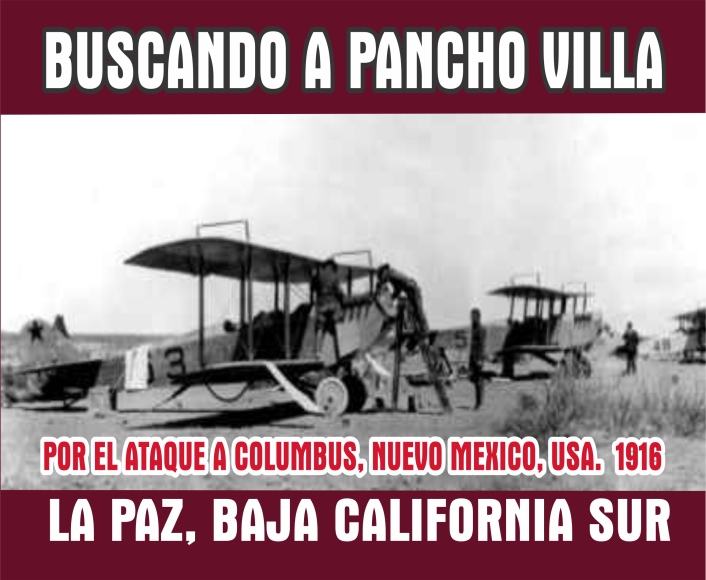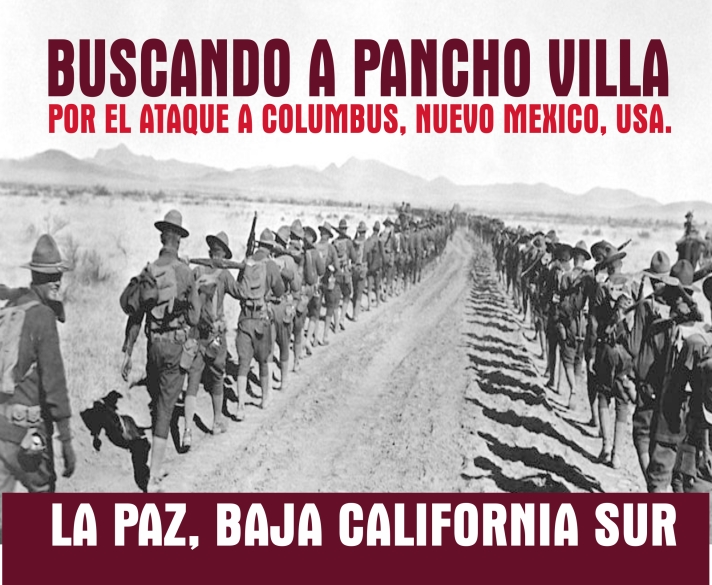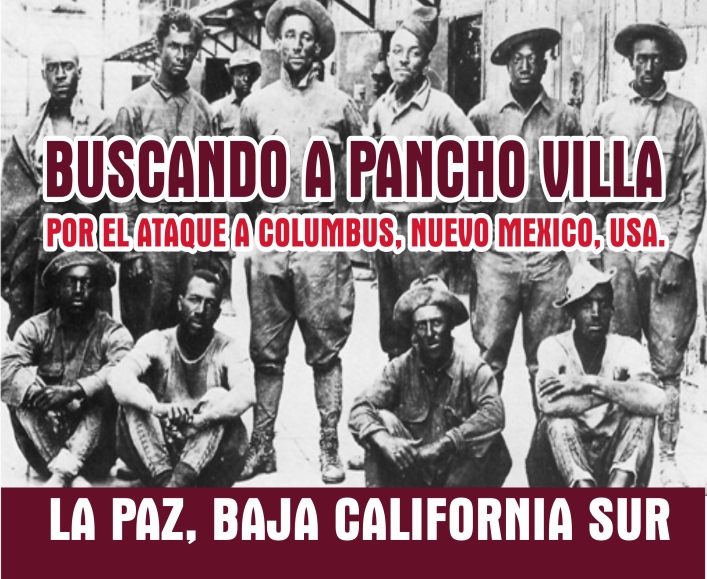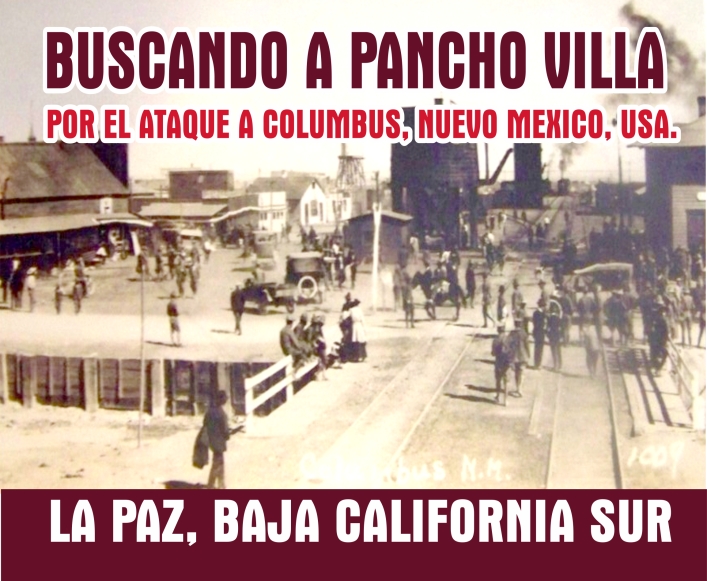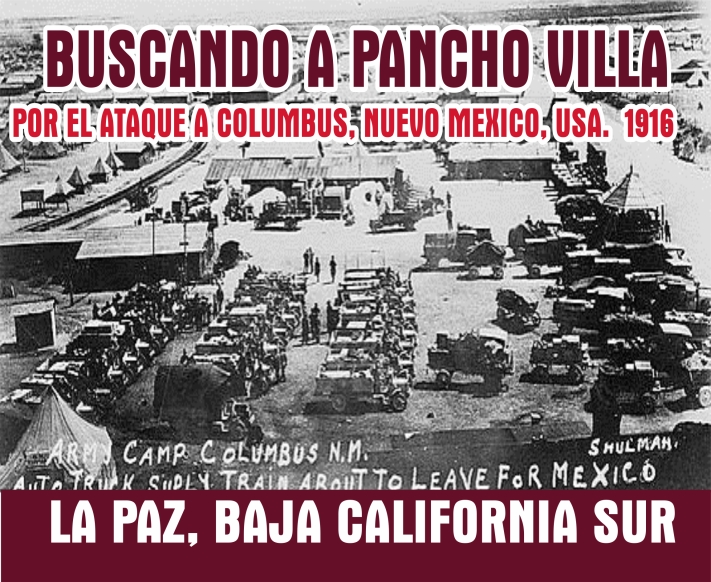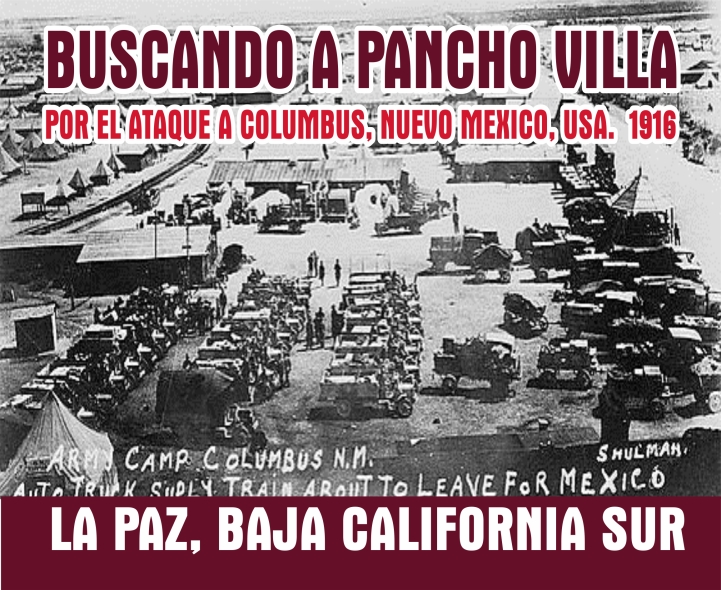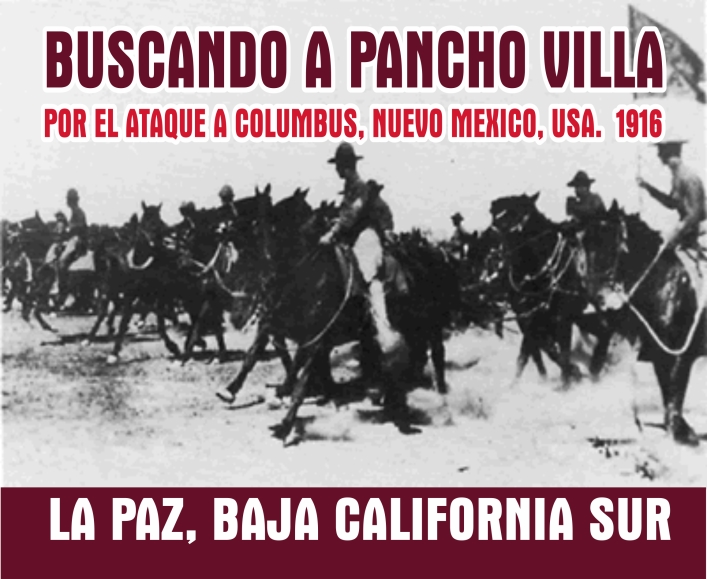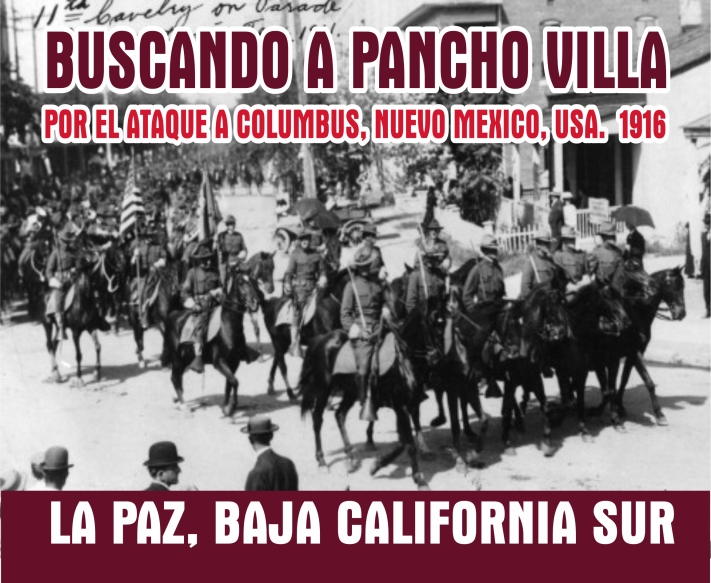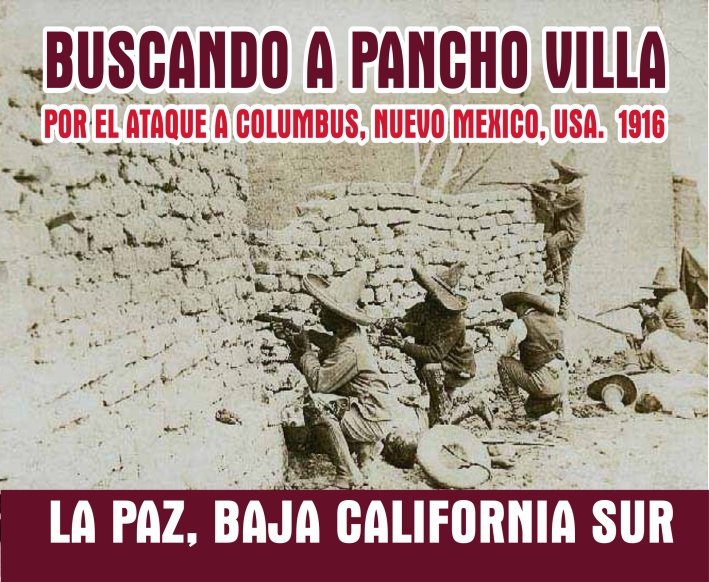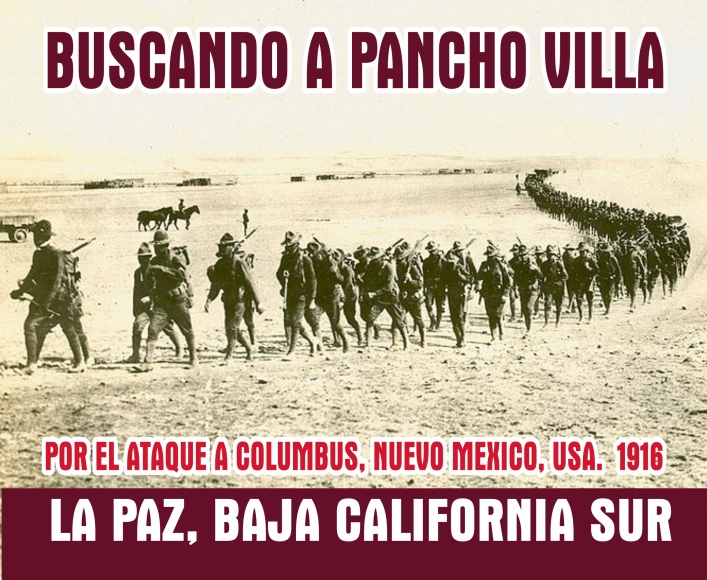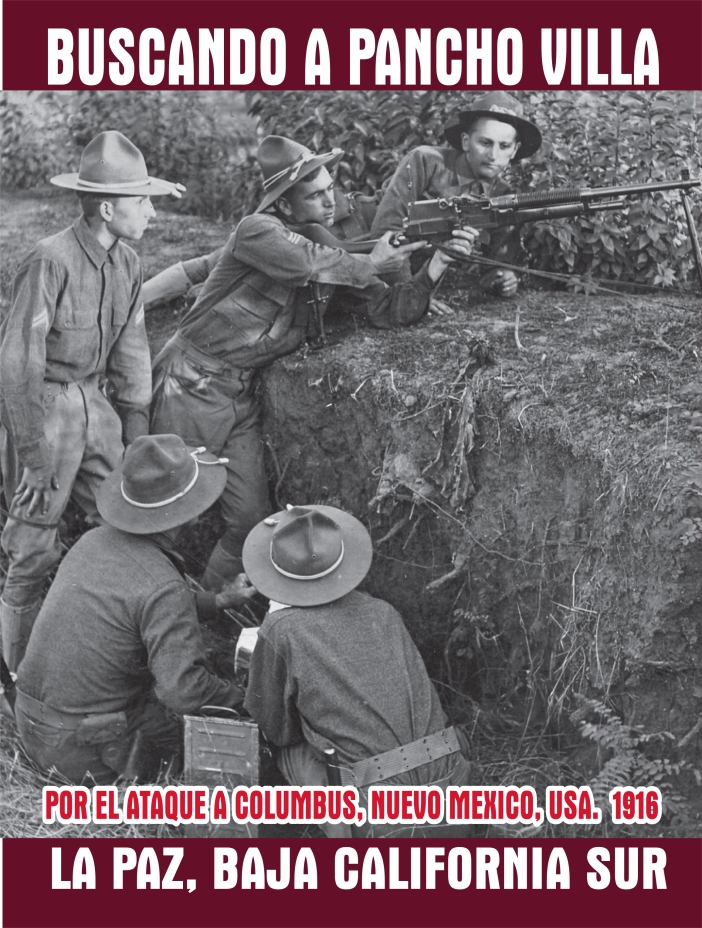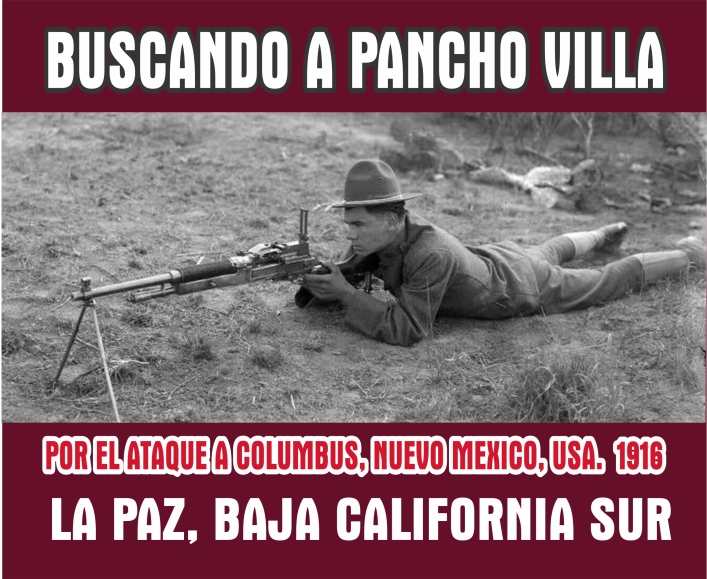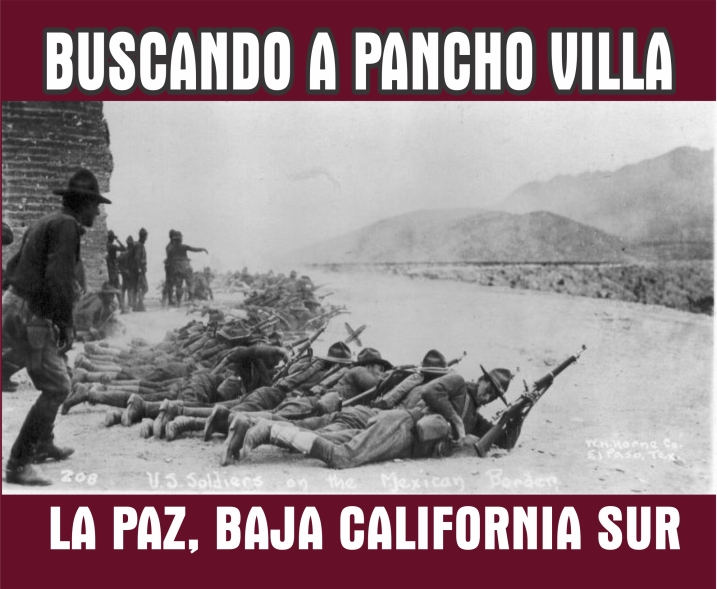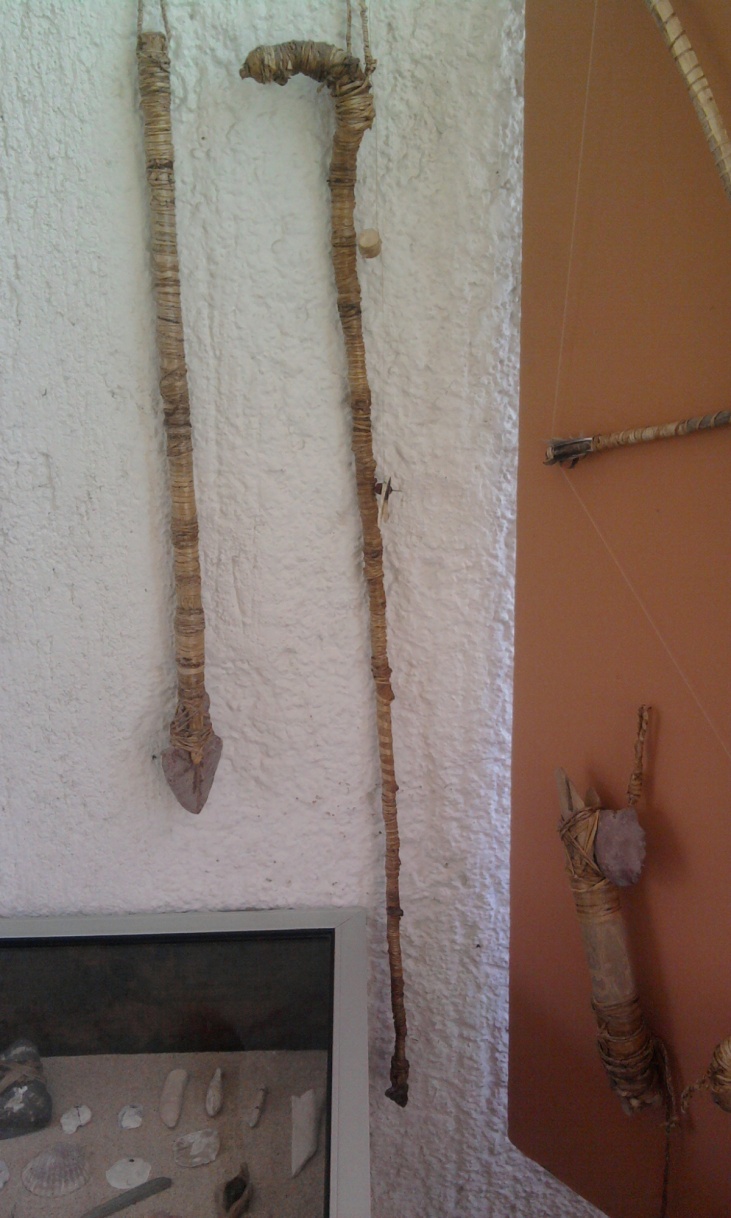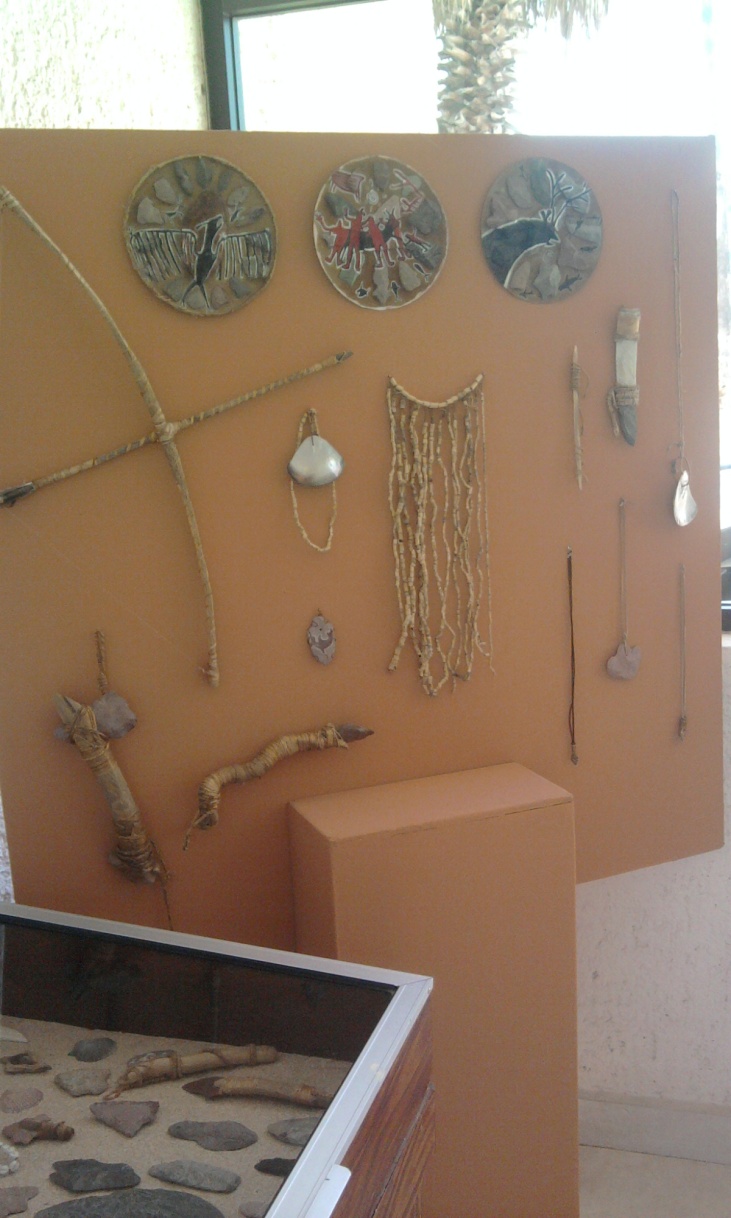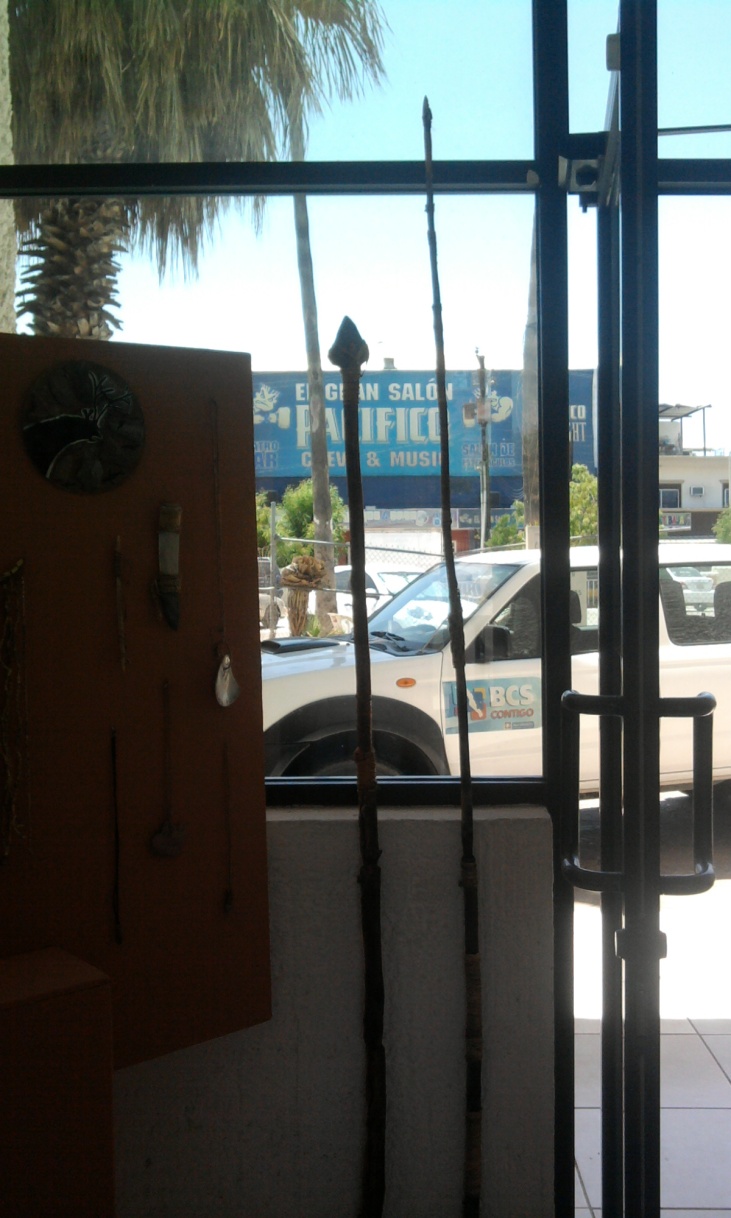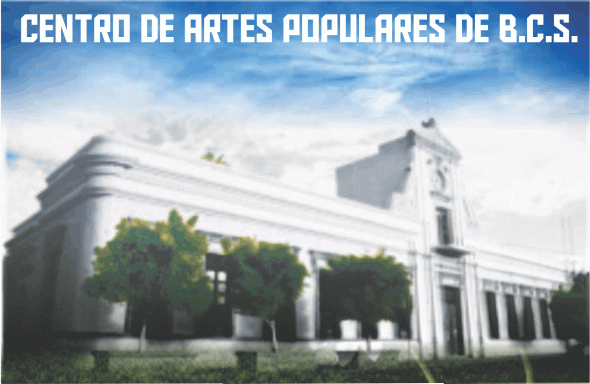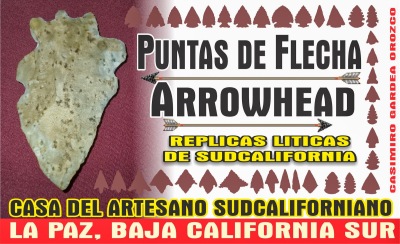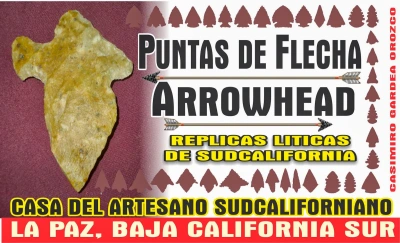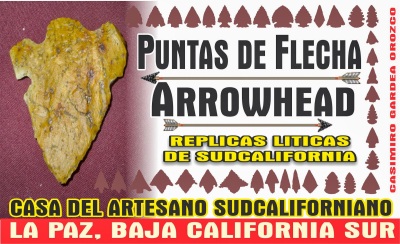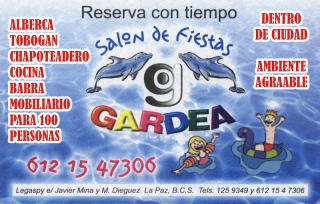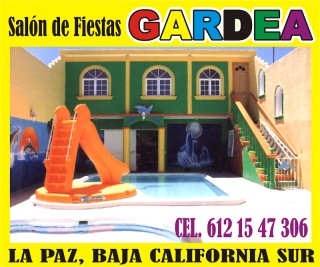|
|
For the border town of Columbus, New Mexico, the date of March 9, 1916 will be remembered forever. It was on this day that Pancho Villa(1878-1923) made his famous border raid. It was an event that would later almost lead the United States and Mexico to war with each other. It was an event that took the people of both Columbus and the rest of the country by suprise. However, there is evidence to suggest that the government of the United States, that which was being led by President Woodrow Wilson, both knew of Francisco Villa’s intentions and welcomed it. This will illustrate the reasons why the government of that era allowed such an event to occur. |
¿Conocían los Estados Unidos del ataque de Villa antes de que pasara?
Para el pueblo fronterizo de Columbus, Nuevo México, la fecha del 9 de marzo de 1916 se recordará para siempre. Puesto que en este día Pancho Villa (1878-1923) realizó su famoso ataque fronterizo. Fue un evento que casi llevaría a la guerra a los Estados Unidos y México. Fue un evento que tomó a los habitantes de Columbus y del resto del país por absoluta sorpresa. Hay evidencia sin embargo, que sugiere que el gobierno de los Estados Unidos que estaba bajo la conducción del Presidente Woodrow Wilson, conocía de las intenciones de Francisco Villa y le dieron su complacencia. Lo que sigue ilustra las razones de por qué el gobierno de esa época permitió que tal evento ocurriera.

Los eventos que sucedieron el 9 de marzo de 1916 tenían sus razones de ser, Francisco “Pancho” Villa era hombre que estaba deseoso de venganza. Este sentimiento que parecía como un cuchillo que se tuerce en su intestino tuvo su inicio muy al principio de la Revolución Mexicana. Era entonces el tiempo cuando Villa era un buen amigo de los americanos. Era una amistad, sin embargo, que no se dio por todos los lados. Como amigos a menudo tuvieron desacuerdos. Villa quería asegurarse de ser él quién dijera la última palabra y tener la mano arriba.
En cierto grado, Francisco Villa y los Estados Unidos parecían llevarse bastante bien desde el principio. Villa haría a menudo visitas a lo largo de los pueblos fronterizos después de haber completado algunas de sus campañas. Fue recibido con frecuencia como una celebridad. Los americanos se reunían para ver al famoso luchador mexicano que estaba abanderando la libertad de su pueblo. A Villa se le vio comiendo helados en las neverías de la frontera. Francisco Villa y Pascual Orozco fueron retratados juntos en una tienda local que alguna vez existió en el pueblo fronterizo de El Paso. Irónicamente, Villa también fue fotografiado de pie al lado de su amigo John Pershing. El mismo Pershing que un día estaría tratando de cazarlo.

De izquierda a derecha y de acuerdo a la numeración indicada, aparecen: 1.- teniente coronel Serrano, 2.- Gral Álvaro Obregón, 3.- Emilio Madero, 4.- Luis Aguirre Benavides, 5.- Gral. Francisco Villa Arámbula, 6.- Dr. Lyman B. Rauchsman, 7.- Gral. John J. Pershing y 8.- George C. Patton. La ubicación corresponde a la mitad del puente internacional Cd. Juárez – El Paso y la fecha el 27 de agosto de 1914, previo a un banquete celebrado en su honor en el Fort Bliss. La foto corresponde a la colección de la Fototeca Nacional INAH de Pachuca y la identificación de los personajes fue proporcionada por don José Abraham de León Fong, nieto del general Pablo Domínguez, subalterno del gral. Pánfilo Natera.

Los generales Francisco Villa y Hugh Lenox Scott a la salida de amistosa reunión en El Paso, Texas, .mucho antes del ataque a Columbus. Villa con su asistente el temible general Rodolfo Fierro, a la izquierda y atrás de Scott aparece su ayudante “Michie”.. Fototeca Nacional INAH de Pachuca.


Columbus, Nuevo México antes y después del ataque de Pancho Villa en 1916.
Columbus, Nuevo México antes y después del ataque de Pancho Villa en 1916.
Pancho Villa’s Raid on Columbus, New Mexico.
In the early morning darkness of March 9, 1916, guerrillas of the Mexican Revolution under General Francisco “Pancho” Villa attacked the small New Mexico border town and military camp at Columbus — the site of what is now Pancho Villa State Park.
As the sun rose on the morning of March 9, 1916, the center of Columbus, New Mexico was a smoking ruin. Word of Pancho Villa’s attack on the town flashed by telegraph, making newspaper headlines throughout the nation. Camp Furlong, the Columbus military outpost, seethed with activity as fresh troops arrived by train and the U.S. Army prepared to pursue Villa into Mexico.
Pershing’s Punitive Expedition.
Led by General “Black Jack” Pershing, who would later command the Allied forces of World War I, the Punitive Expedition forged south from Columbus on March 16, 1916. The search for Villa would ultimately lead American troops some 400 miles into Mexico, as far south as the city of Parral where, after a skirmish, they turned back to bases in northern Mexico. For 11 months, the 10,000 soldiers of Pershing’s Punitive Expedition endured parching heat and bone-chilling cold as they ranged the wild deserts and mountains of the vast state of Chihuahua, tracking the Villista raiders.
The Punitive Expedition was the last true cavalry action mounted by the U.S. Army, and, ironically, was also the first U.S. military operation to employ mechanized vehicles. In what would prove to be a preparation for World War I, Pershing experimented in Mexico with the use of automobiles, trucks, and airplanes, though fuel for those new-fangled machines often had to be transported on pack mules.
Pershing succeeded in dispersing the Mexican forces that had attacked Columbus, but the revolutionary chieftain, Pancho Villa, vanished into the Mexican backcountry and was never captured. In February, 1917, the Punitive Expedition returned to Columbus and Camp Furlong, where troops, toughened by the rigorous march through Chihuahua, boarded trains that would carry them to other conflicts. Many would see action in World War I.
Columbus and Camp Furlong Today.
The military post at Camp Furlong was closed in 1926, and the extensive cactus gardens of Pancho Villa State Park now cover its site. Several buildings dating from the time of Villa’s raid still stand in Columbus, including the adobe Hoover Hotel, the restored Columbus railroad depot, and the old U.S. Customs Service building. The customs house, build in 1902, is now the Pancho Villa State Park visitor center, with exhibits describing the histories of Pancho Villa, the Columbus raid of 1916, and Pershing’s Punitive Expedition.
Pancho Villa State Park is located 35 miles south of Deming via NM 11.
Pancho Villa ataca Columbus, Nuevo México.
Cuando el sol subió en la mañana del 9 de marzo de 1916, el centro de Columbus, Nuevo México era una verdadera ruina entre humo y llamas. La noticia del ataque de Pancho Villa en el pueblo se difundió por el telégrafo, sirviendo de encabezado de todos los periódicos a lo largo de la nación. El campamento Furlong, el fortín militar de Columbus, pronto hirvió con la actividad como las tropas frescas que llegaron por tren y el ejército americano se preparó para seguir a Villa en México.
La Expedición Punitiva de Pershing.
Encabezados por el General “Black Jack” Pershing, mismo que comandaría los fuerzas aliadas de la Primera Guerra Mundial, la Expedición Punitiva cruzó al sur de Columbus el 16 de marzo de 1916. La búsqueda de Villa llevaría a las tropas americanas finalmente unas 400 millas adentro de México, llegando rumbo al sur hasta la ciudad de Parral dónde, después de una escaramuza, ellos retrocedieron a sus bases en el norte de México. Durante 11 meses, los 10,000 soldados de la Expedición Punitiva de Pershing soportaron el sofocante calor y el frío que se cuela hasta los huesos cuando recorrieron los desiertos salvajes y las altas montañas del inmenso estado de Chihuahua, tras la búsqueda de los invasores Villistas.
La Expedición Punitiva fue la última verdadera acción de la caballería montada del Ejército americano, e irónicamente, también fue el primer entrenamiento militar en emplear los vehículos mecanizados. En lo que demostraría ser más una preparación para la Primera Guerra Mundial, Pershing experimentó en México con el uso de automóviles, camiones, y aviones, sin embargo el combustible necesario para aquellas máquinas a menudo tuvo que ser transportado a lomo de mulas.
Pershing tuvo éxito dispersando las fuerzas mexicanas que habían atacado a Columbus, pero el jefe revolucionario, Pancho Villa, desapareció en el extenso territorio mexicano y nunca se capturó. En febrero de 1917, la Expedición Punitiva se volvió a Columbus en el Campamento Furlong, dónde esos soldados endurecidos por la marcha rigurosa a través de Chihuahua, abordaron los trenes que los llevarían a otros conflictos. Muchos de ellos verían la acción en la Primera Guerra Mundial.
Columbus y el Campamento Furlong en la actualidad.
El cuartel militar en el Campamento Furlong cerró en 1926, y en el sitio que ocupaba entonces se encuentra un extenso jardín cultivado con cactus, en lo que es ahora el Parque Estatal Pancho Villa. Aún están en pie varios edificios de la época en que Villa realizó el ataque, incluso el construido de adobe del Hotel Hoover, el actual depósito del ferrocarril en Columbus que fue restaurado y el viejo edificio del servicio de aduanas americano. La Aduana fue construida en 1902 y es ahora el centro de atención de los visitantes al parque estatal, con exhibiciones que describen las diversas historias de Pancho Villa, el ataque a Columbus de 1916 y la Expedición Punitiva de Pershing.
El Parque Estatal Pancho Villa se localiza a 35 millas al sur de Deming, vía NM 11.
 
|
Los americanos decidieron probar en el campo algunos de sus nuevos equipos militares durante la expedición contra Villa, pero sólo lograron generar aún más polvo en el camino que permitía a Villa esconderse detrás, mientras él perseguía la columna americana oculto detrás de la gran nube.
Además de todos sus camiones, automóviles, motocicletas, y los carros blindados, Pershing también empleó dirigibles y aviones en su propósito implacable de encontrar a Villa. La leyenda dice – según está grabado en una canción – que las tropas de Villa confeccionaron una bandera americana y se estacionaron en un lugar estratégico sobre del cual sabían que uno de estos aviones volaría (ellos tenían un excelente servicio de inteligencia). El piloto, pensando que estaba viendo una unidad americana, aterrizó y fue inmediatamente capturado por los Villistas. Villa entonces usó el avión para espiar a los americanos.

Soldados norteamericanos hechos prisioneros por el Ejercito Constitucionalista de Venustiano Carranza durante de la batalla de El CarrizalInstead of fighting it out with Villa, as they were intending to do, the American army instead would up in a battle with forces of Carranza, and they got the worst of it, with the survivors of their unit being captured in the town of Carrizo, 128 kilometers south of Juarez. Typically, the United States sent “negro” troops – known formerly as “buffalo soldiers” – to do their dirty work, while their white skinned countrymen stayed behind in relative safety. These soldiers were later returned to a less than hero’s welcome by the Mexicans. This incident came close to bringing both countries to war, but it was later smoothed over.
En lugar de luchar en contra de Villa tal como estaban intentando hacer , el ejército americano en cambio se lió en una batalla en contra de las fuerzas de Carranza, y consiguieron la peor parte de élla, con los sobrevivientes de su unidad capturados en el pueblo de Carrizo, 128 kilómetros al sur de Cd. Juárez. Típicamente, los Estados Unidos enviaron tropas de color (negros) -conocidos anteriormente como “soldados del búfalo” – para hacer el trabajo sucio, mientras sus compatriotas de color blanco se quedaron detrás en relativa seguridad. Estos soldados fueron mas tarde devueltos como poco menos que héroes dándoles la bienvenida los mexicanos. Este incidente estuvo cerca de provocar que ambos países entraran en guerra, pero después fueron calmados los ánimos.
Columbus, New Mexico –
Pancho Villa and the Railroad Depot Museum
By Allen Rosenberg, Museum Director
|
The Railroad Depot Museum Photo courtesy Railroad Depot Museum |
What vision comes to mind when you hear the name Pancho Villa? Bandit, hero, valiant leader, ruthless tyrant? All of those names have been associated with him. He was not an easy man to define; it would depend on when you met him during his career. Here in Columbus, New Mexico, the same holds true. Some of our citizens have been told by their older relatives that he was a defender of the people. Others say he killed many of his countrymen in their villages. |
Here in Columbus, we saw the results of his raid. Over 500 Villista’s attacked our town in the predawn hours of March 9, 1916. By the time the raid was over, one half the invaders were killed or wounded and 18 Americans were dead. This was the last time a foreign government invaded the Continental United States.
In retaliation for the raid, President Wilson formed a military group to attack and capture Pancho Villa under the leadership of General “Black Jack” Pershing. In the space of one week, Pershing not only drew up the logistical plan for the campaign, but actually had troops on the way to Columbus where he would march into Mexico. In a remarkably short time, the Punitive Expedition entered Mexico and tried to track Villa to his lair. With all the men, horses, mules and might of 10,000 troops, 11 months later our army had never once met up with Villa’s main force. They fought many small battles but never a big one. This was guerrilla warfare at its most effective. We were the foreign invaders. Everyone was against us even if they weren’t for Villa.
It was an educational time for our armed forces. This was the first time that Americans used mechanized vehicles in combat. This included cars and trucks (purchased on the open market) from auto dealers in El Paso and other locations. At that time, cars were not in general use; the drivers were given rudimentary instructions and told to drive. It wasn’t uncommon to hear the drivers shouting “giddy up” and “whoa” instead of pushing the proper pedals in the vehicles. The first armored vehicles were used here. They were the forerunners of tanks. Motorcycles also were used in combat conditions. They (and mules) often would have machine guns mounted as they rode into combat. As an interesting sidenote, the regular paths that people used to get from one village to another were too rough for our vehicles so the Army Corp of Engineers improved the road between Columbus and Casas Grande, Mexico.
This effort also included the first use of airplanes in combat conditions. Our entire air force (eight planes) was stationed in Columbus, a squadron of the signal corps. Up to this time, planes were used to carry messages. Here, since they were underpowered, they flew so low they would draw fire from people on the ground. In self-defense, they carried grenades as bombs and shot back at the ground troops. The planes were also used as observers for the first time; they located suspected enemies and carried the news back to the troops. It was an exciting time for the U.S. troops. More than twenty thousand troopers gained experience in combat conditions which proved to be of great value as the U.S. entered into the European theater the following year when they returned from Mexico.
What effect did this have on Columbus? While the troops were here, Columbus was the largest settlement in New Mexico. But when they left, it became smaller than before. Over the years the town dwindled in size until the trains stopped running in the 1950s. The population dropped to around 200 and the village was listed in many locations and guides as a ghost town. Now we are up to about the size of the village at the time of the raid, around 1700 people. We still maintain our rural character but with a surprise or two for the visitors to our area.
Our Railroad Depot Museum was the railroad depot at the time of the raid and was one of the principal targets. The Villistas wanted loot, money and goods to help finance their war against the Nationalist Army. Shots were fired at the depot, which was closed for the night. The only real casualty was a wall clock that stopped when it was hit by a bullet and recorded the time of the start of the raid. The clock is currently being held in Santa Fe and will only return when we can guarantee its safety. The museum has an excellent collection of photos of scenes taken both in Columbus and throughout the area of the Punitive Expedition. Watch the videos that were made about Pancho Villa and his raid. Examine the artifacts of the soldiers stationed here and imagine spending a winter chasing after a bandit at high altitudes in the mountains of Chihuahua, Mexico. Look at the display of weapons that were used on both sides. We also have a copy of Pancho Villa’s death mask as well as one of his sombreros.
When you have had your fill of death and destruction, the other rooms in the depot will give you an idea of life on the frontier around the turn of the century. Costumes and implements fill the walls and display cases. We even have some railroad memorabilia. In May of 2000, a painting of our entire air force of early 1916 was unveiled in town. Three days later the painting was presented to the Pentagon in Washington, DC. We are proud to offer signed and numbered prints for sale.
Columbus is located three miles from the Mexican border and is the only crossing point in New Mexico that is open 24 hours a day. Many of the visitors to the museum are from across the border. When you visit, be sure to sign our guest book. Our phone number is 505-531-2620.
Pancho Villa y el Museo del Depósito del Ferrocarril
¿Qué visión viene a su mente cuándo oye el nombre de Pancho Villa? ¿Bandolero, el héroe, el líder valiente, el tirano cruel? Todos esos nombres han sido asociados con él. Él no era un hombre fácil de definir; dependería mucho de cuando se lo encuentre durante su carrera. Aquí en Columbus, Nuevo México, se sostiene lo mismo. Algunos de nuestros ciudadanos de acuerdo con lo que les han dicho sus parientes más viejos piensan que él era un defensor de su pueblo. Otros dicen que él mató a muchos de sus compatriotas en sus mismos pueblos.
Más de 500 Villistas atacaron el pueblo al amanecer del 9 de marzo de 1916. Cuando el ataque terminó, la mitad de los invasores habían muerto o estaban heridos y 18 americanos estaban muertos. Ésta fue la última vez que un gobierno extranjero invadió los Estados Unidos Continentales.

En venganza del ataque, el Presidente Wilson formó un grupo militar para atacar y capturar a Pancho Villa, bajo la dirección del General “Black Jack” Pershing . En el espacio de una semana, Pershing preparó no sólo el plan logístico para la campaña, sino que realmente tenía las tropas listas en Columbus de dónde él marcharía rumbo a México. En un tiempo notablemente corto, la Expedición Punitiva entró en México e intentó rastrear a Villa en sus dominios. Con todos sus hombres, caballos, mulas y el poderío de un ejército de 10,000 elementos, 11 meses después nuestro ejército nunca se había encontrado una sola vez con la fuerza principal de Villa. Lucharon en muchas batallas pequeñas pero nunca una grande. Ésta era la guerra de guerrillas en su más eficaz dimensión. Nosotros éramos los invasores extranjeros. Todos estaban en contra de nosotros, aun cuando muchos de ellos no estaban con Villa.

Era una etapa de entrenamiento y aprendizaje para nuestras fuerzas armadas. Era la primera vez que los americanos usaron los vehículos mecanizados en el combate. Esto incluyó automóviles y camiones (comprados en el mercado abierto) de los distribuidores de autos en El Paso y otros lugares. En ese momento, los automóviles no estaban en uso general; a los chóferes se les dieron las instrucciones rudimentarias necesarias y dijeron saber manejar. No era raro oír a los chóferes que gritaban “mareado y “whoa” en lugar de empujar los pedales apropiados en los vehículos. Los primeros vehículos blindados se usaron aquí. Fueron los precursores de los tanques. También se usaron las motocicletas en las condiciones del combate. Estos vehículos (y mulas) a menudo tendrían las ametralladoras montadas cuando entraron en el combate. Como una nota al margen interesante, los caminos regulares de México que las personas utilizaban para transportarse de un pueblo a otro eran demasiado ásperos para nuestros vehículos y por lo mismo el Cuerpo de Ingenieros del Ejército Americano mejoró el camino entre Columbus y Casas Grandes, México.
Este esfuerzo también incluyó el primer uso de aviones en las condiciones del combate. Nuestra fuerza aérea entera (ocho aviones) se estacionó en Columbus, un escuadrón de los cuerpos de señales. En este tiempo, se usaron los aviones para llevar los mensajes. Como se trataba de unidades de baja potencia, volaban tan bajo que recibían el fuego de las personas de tierra. En la autodefensa, ellos llevaban granadas que usaban como bombas y dispararon por atrás a las tropas en tierra. Los aviones también se usaron la primera vez como observadores para que localizaran a los enemigos sospechosos y llevaron las noticias atrás a las tropas. Era un tiempo excitante para las tropas americanas. Más de veinte mil soldados de caballería ganaron la experiencia en condiciones de combate que demostraron ser de de gran valor cuando los EE.UU. entraron en el teatro de operaciones europeo al año siguiente y a su retorno de México.
¿Qué efecto tuvo en Columbus? Mientras las tropas estaban aquí, Columbus era el cuartel más grande en Nuevo México. Pero cuando ellos salieron, se volvió más pequeño que antes del ataque. Durante años el pueblo fue menguando en tamaño hasta que los trenes dejaran de correr en los años cincuenta. La población se redujo a alrededor de 200 y el pueblo se listó en muchas guías como un pueblo fantasma. Ahora tiene casi la misma cantidad de habitantes que el pueblo tuvo en el momento del ataque, alrededor de 1700 personas. Todavía mantiene su carácter rural.
El Museo del Depósito del Ferrocarril era el depósito del ferrocarril en el momento del ataque y era uno de los blancos principales. Los Villistas querían botín, dinero y géneros para ayudar a financiar su guerra contra el Ejército Nacionalista. Se dispararon varios tiros en el depósito que estaba cerrado durante la noche. El único incidente real fue un reloj de pared que se detuvo cuando le pegó una bala y grabó la hora en que terminó el ataque. El reloj se encuentra actualmente en Santa Fe y sólo volverá cuando se pueda garantizar su seguridad. El museo tiene una colección excelente de fotografías de escenas tomadas tanto en Columbus como a lo largo del área recorrida por la Expedición Punitiva. Puede ver los videos que se han hecho sobre la Pancho Villa y y el ataque. Examine los artefactos de los soldados que estuvieron estacionados aquí e imaginen el esfuerzo y las condiciones climáticas de una persecución invernal detrás de un bandolero en las altas montañas de Chihuahua, México. Mire el despliegue de armas que se usaron en ambos bandos. también se encuentra una copia de la mascarilla de Pancho Villa, así como uno de su sombreros.
Cuando usted se ha hartado de muerte y destrucción, los otros cuartos en el depósito le darán una idea de la vida en la frontera alrededor del inicio del siglo XX. Los trajes y los instrumentos están colgados de las paredes y dentro de las vitrinas para su exhibición. Hay incluso algunos recuerdos del ferrocarril. En mayo de 2000, se develó una pintura que muestra la que era toda la fuerza aérea estacionada en el pueblo en sus inicios en 1916. Tres días después la pintura se presentó al Pentágono en Washington, DC.
Columbus se localiza a tres millas de la frontera mexicana y es el único punto del cruce en Nuevo México que se encuentra abierto las 24 horas del día. Muchos de los visitantes al museo son mexicanos.

El famoso poster de Pancho Villa con la recompensa que se ofrece de $5000 dólares por su captura.
The famous Pancho Villa reward poster – offering $5,000 dollars for his capture!
Este poster de reclutamiento llama a filas a ¡25000! para la captura de Villa que esten dispuestos a defender su bandera y su gloria.
This recruiting poster calls for 25,000 men to “shoulder the trusty Springfield” and get read y to defend “The Flag, Old Glory”.
Una tarjeta postal americana exagerando el poderío del ejercito yanqui y consignando a Villa a la categoría de bandido.
An American post card exaggerating the prowess of Yankee military might and consigning Villa to the rank of “bandit”.
The reasons of Pancho Villa.
On March 8, 1916 Pancho Villa and about 400 of his troops arrived about four miles from Columbus, New Mexico. They were preparing to attack this small American town. Why Villa chose this small town, is still a topic for debate among historians. The town had a garrison of about 600 soldiers. It was the home of Sam Ravel, a man to whom Villa had given money to buy arms. Ravel never delivered the weapons nor returned Villa’s money.
Before the attack Villa told his men the reasons he had decided to attack this American town. He said the Carranza government had practically sold Mexico to the Americans. He also mentioned how the U.S. had been given the power to name three Mexican cabinet members. However, all this meant very little to Villa’s illiterate soldiers.
One of Villa’s top officer’s, Pablo Lopez put it in plain terms. “We want revenge against the Americans,” he yelled out. Lopez said the U.S. was to blame for their defeat at Agua Prieta and Celaya. He accused the Americans of allowing the Carrancistas to travel across U.S. land to reinforce their garrison. Villa added another serious accusation, saying that the U.S. had sold them defective weapons and ammunition.
The clincher though, was the terrible act that had occurred in El Paso just two days earlier. According to reports from the time, the following was standard practice. Some 20 Mexicans had been arrested by the local police and they then been soaked with kerosene to delouse them. Someone then set fire to the men. It was never proven whether the fire was an accident or not. However, all 20 Mexicans were burned alive. After hearing this story, Villa’s soldiers were now ready to fight the entire American army.
At 4:45 A.M. on March 9 Villa’s men rode into Columbus, firing into the army barracks, catching the American soldiers by surprise. Another group later rode into town shooting into houses and at any civilian who came out. The Villistas then charged into a hotel and killed four guests.
Villa had stayed on the Mexican side of the border with a small group of his men. Meanwhile his raiders were looking for Sam Ravel, but never found him. He had already left town on a scheduled appoint with his dentist in El Paso.
The U.S. soldiers were now firing back at the Villistas in the predawn darkness. However, the skies were soon to be lit by a fire the raiders had started at the hotel. This helped the Americans see their targets better. By 7:30, three hours after the raid began, a Villista bugler sounded retreat. The Mexicans picked up their wounded and withdrew back to Mexico.
The American troops were now riding and shooting in hot pursuit, following the Villistas about five miles into Mexico. There, the U.S. soldiers met strong resistance from Villa’s fighters. The Americans quickly retreated back to Columbus.
In the end, more than 100 Villistas had been lost in the attack. About 17 Americans, mostly civilians, were killed.
Following his defeat at Celaya, Pancho Villa again had a victory, of sorts, to be proud of.
What was to come next would surprise everyone.
Katz, Freidrich, Katz. The Life and Times of Pancho Villa. Stanford University Press, 1998.
Las razones de Pancho Villa.
El 8 de marzo de 1916 Pancho Villa y cerca de 400 de sus hombres llegaron aproximadamente a cuatro millas de Columbus, Nuevo México. Se estaban preparando para atacar este pequeño pueblo americano . ¿Por qué Villa escogió este pueblo pequeño?, todavía es un tema para el debate entre historiadores. El pueblo tenía una guarnición de aproximadamente 600 soldados. Estaba allí la casa de Sam Ravel, un hombre a quien Villa le había dado el dinero para comprar armas. Ravel nunca le entregó las armas, ni le devolvió el dinero.
Antes del ataque Villa les dijo a sus hombres las razones del ataque y porqué había decidido atacar este pueblo americano, Él les dijo que el gobierno de Carranza había vendido prácticamente México a los americanos. También mencionó cómo los EE.UU. se habían atribuido el poder para nombrar a tres miembros ministeriales mexicanos. Sin embargo, todos esto significó muy poco para los soldados analfabetos del ejército de Villa.
Uno de los oficiales de alto rango de Villa, Pablo López, puso todo en términos claros. “Queremos la venganza en contra de los americanos,” gritó. Luego López dijo que los EE.UU. eran culpables de su derrota en Agua Prieta y en Celaya. Acusó a los americanos de permitir a los Carrancistas viajar en tren por el lado americano para reforzar su guarnición. Villa agregó otra imputación seria, diciendo que los EE.UU. les habían vendido armas y municiones defectuosas.
El remate sin embargo, fue el acto terrible que había ocurrido sólo dos días antes en El Paso. Según los reportes de la época, lo que sigue era práctica normal. Unos 20 mexicanos habían sido arrestados por la policía local y habrían sido empapados con querosén para despiojarlos. Alguien puso fuego muy cerca de los hombres. Nunca será probado si el fuego fue un accidente o no. Sin embargo, los 20 mexicanos se quemaron vivos. Después de oír esta historia, los soldados de Villa estaban ahora sí, listos para luchar en contra del ejército americano entero.

A las 4:45 de la mañana del 9 de marzo los hombres de Villa montaron rumbo a Columbus, disparando dentro de las barracas del ejército acuartelado y tomando por sorpresa a los soldados americanos. Otro grupo montó rumbo al pueblo disparando contra las casas y a cualquier civil que saliera. Los Villistas atacaron entonces un hotel y allí mataron a cuatro de los huéspedes.

Villa se había quedado del lado mexicano de la frontera con un grupo pequeño de sus hombres. Entretanto sus invasores estaban buscando a Sam Ravel, pero nunca fue encontrado. Ya había dejado el pueblo mucho antes, pues tenía una cita concertada con su dentista en El Paso.

Las tropas americanas regresando de su sorpresa ya estaban disparando en persecución de los Villistas todavía en la oscuridad previa del amanecer. Muy pronto los cielos se iluminaron con el resplandor del fuego iniciado por los invasores en el hotel. Esto les dio mejor visibilidad a los americanos pudiendo distinguir mejor sus blancos. Cerca de las 7:30 de la mañana y después de tres horas de ataque, un clarín villista tocó la retirada. Los mexicanos recogieron sus heridos y retornaron a México.

Las tropas americanas perseguían y disparaban a los mexicanos en su retirada y penetraron hasta aproximadamente cinco millas dentro de México. Allí, los soldados americanos encontraron fuerte resistencia de las luchadoras fuerzas de Villa. Los americanos se retiraron rápidamente y retornaron a Columbus.

Más de 100 Villistas habían muerto en el ataque. Se calcula que murieron aproximadamente 17 americanos, principalmente los civiles.

Después de su derrota en Celaya, Pancho Villa tenía ahora una victoria, de la cual podría sentirse orgulloso.
Lo que vendría después habría de sorprender a todos…
Katz, Freidrich, Katz. The Life and Times of Pancho Villa. Stanford University Press, 1998.
Conclusiónes: ¿Que semejanza puede tener este triste acontecimiento, con el actual que vive el pueblo norteamericano? Queda al criterio de cada una de las personas que lea esta página decidirlo
¿Que razones tuvo Villa para atacar Columbus? También habría que analizar con cuidado las que arriba de este párrafo se mencionan y entender que el Villa de 1916 era un hombre muy distinto del de años previos, pues cargaba con una serie de derrotas que Obregón le había infringido a su otrora famosa División del Norte .
Ver en este mismo sitio, La Vida del Gral. Luis Caballero Vargas. en donde se enumeran las batallas que perdió Villa en contra de Obregón, previamente a su aventura en Columbus.
¿Sabía el presidente Woodrow Wilson de las intenciones de Villa? Yo en lo personal no lo creo así, pero es evidente que una situación como esta le sirvió de justificación para el movimiento de las fuerzas armadas y la invasión del territorio mexicano, desde luego que en una magnitud que a mi modo de ver fue en verdad exagerada. ¡10,000 hombres tan solo para capturar a Pancho Villa!

Había otras razones, como la inminente entrada de Estados Unidos en la Primera Guerra Mundial y que necesitaba probar sus equipos y sus fuerzas expedicionarias en condiciones climáticas difíciles.
¿Fue posible hacer justicia y capturar un solo hombre tan escurridizo y hábil como fue Pancho Villa? Es evidente que no fue así, pues después de 11 meses tuvieron que regresar con las manos vacías, a pesar de su poderío bélico y sofisticados equipos.
LA PAZ, BAJA CALIFORNIA SUR
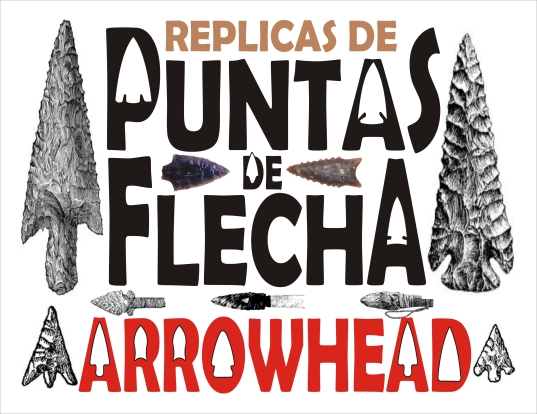
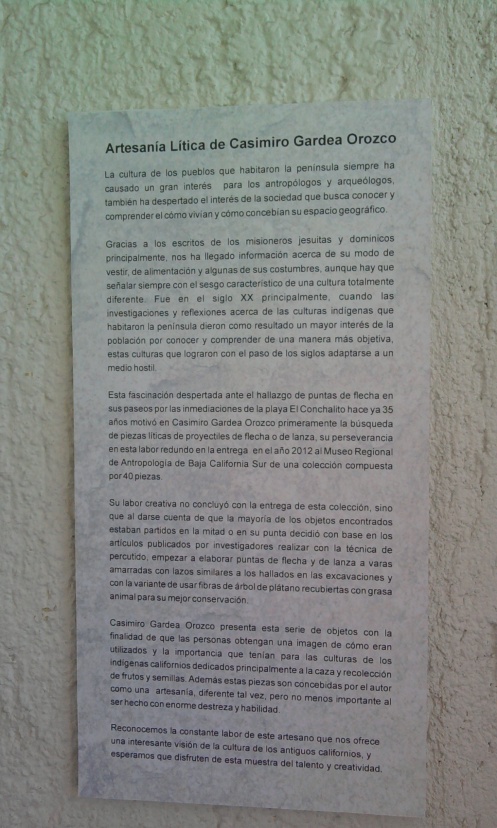

MELISSA MARTY NUESTRA BELLEZA LATINA 2008
VISITO LA PAZ, BAJA CALIFORNIA SUR
Y ENTREVISTO A CASIMIRO GARDEA OROZCO
EN LA CASA DEL ARTESANO SUDCALIFORNIANO
PARA AZTECA AMERICA


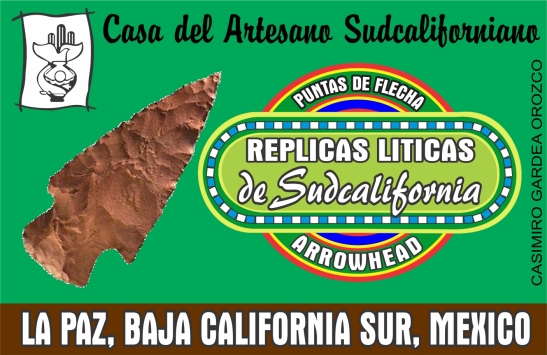
LA PAZ, BAJA CALIFORNIA SUR
PUNTAS DE FLECHA / ARROWHEAT


PEQUEÑA EXPOSICION DE PIEZAS LITICAS
SIMILARES A LAS EMPLEADAS POR LOS
ANTIGUOS POBLADORES DE
BAJA CALIFORNIA,
GUAYCURAS, PERICUES Y COCHIMIES
 PUNTAS DE LANZA, PUNTAS DE FLECHA, CUCHILLOS,
PUNTAS DE LANZA, PUNTAS DE FLECHA, CUCHILLOS,
HACHAS, ARCOS, ARPONES, ACCESORIOS, ORNAMENTOS,
ANZUELOS, PUNZONES, AGUJAS, ETC
VISITA ESTA PEQUEÑA OBRA
Y RECOMIENDALA PARA PODER
EXPONERLA EN OTROS SITIOS CON MAS PIEZAS LITICAS









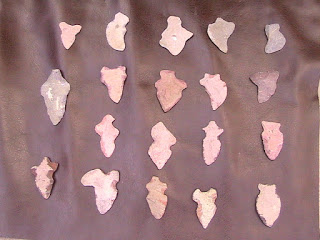
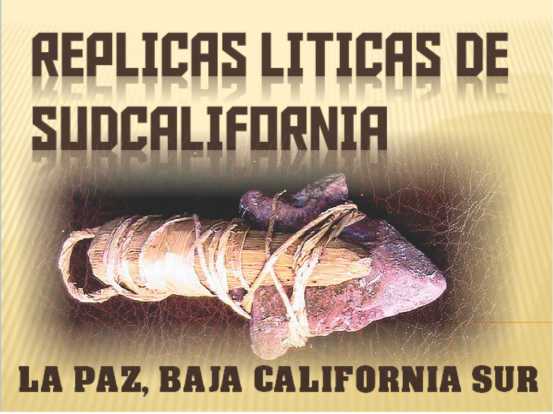
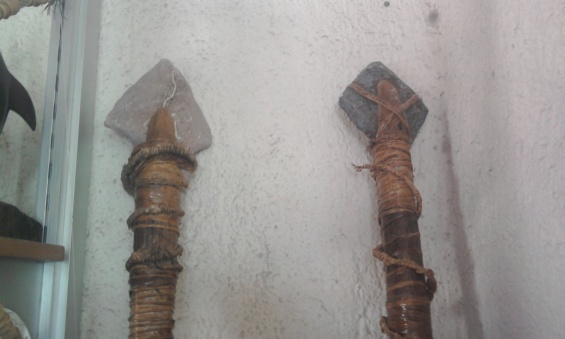
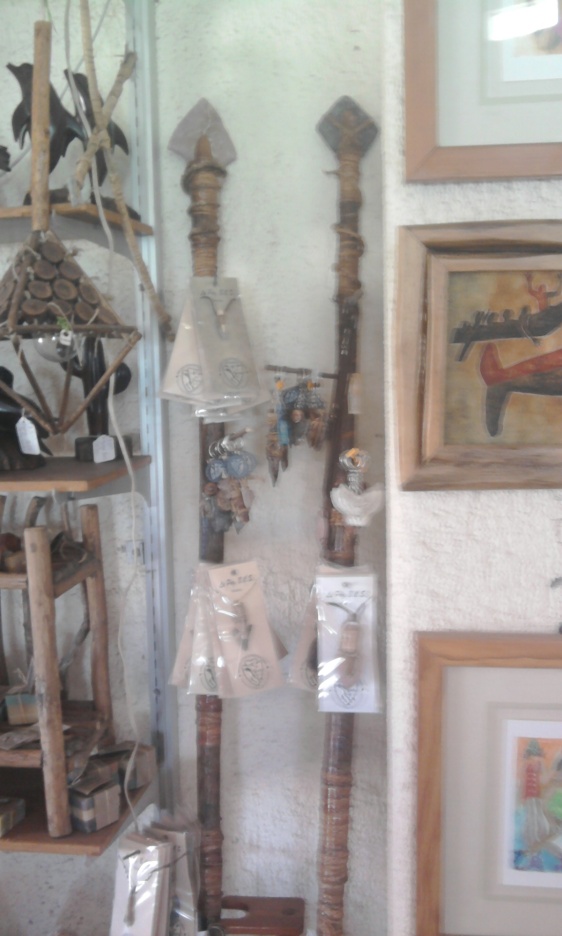 LANZAS
LANZAS
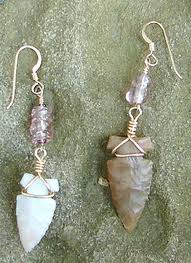
ARETES DE PUNTAS DE FLECHA
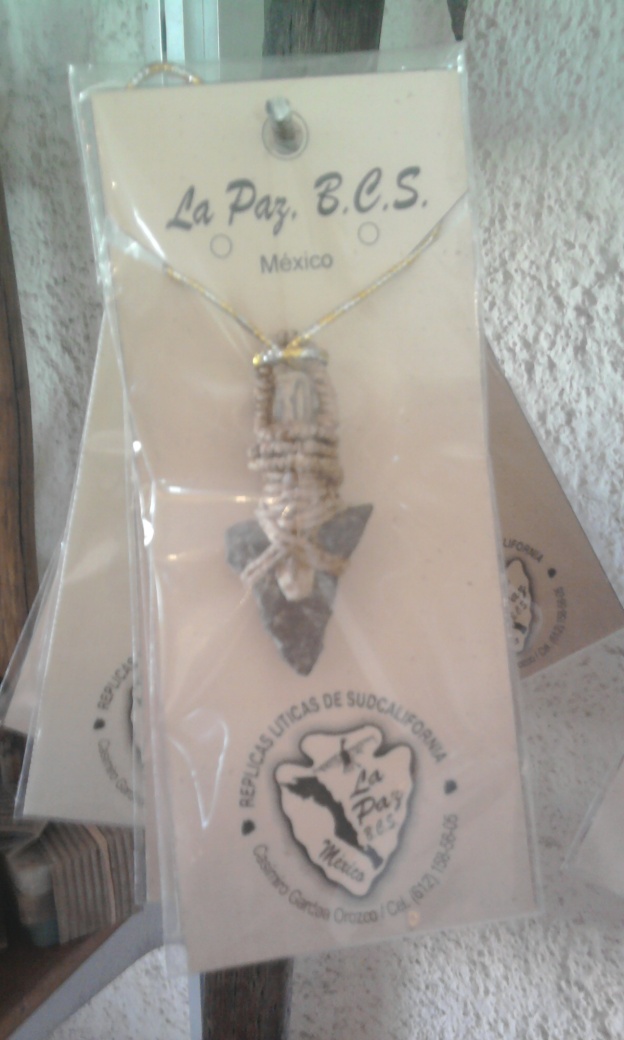
COLGANTES DE PUNTAS DE FLECHA
CENTRO DE ARTES POPULARES DE BCS .
FRENTE AL JARDIN VELASCO
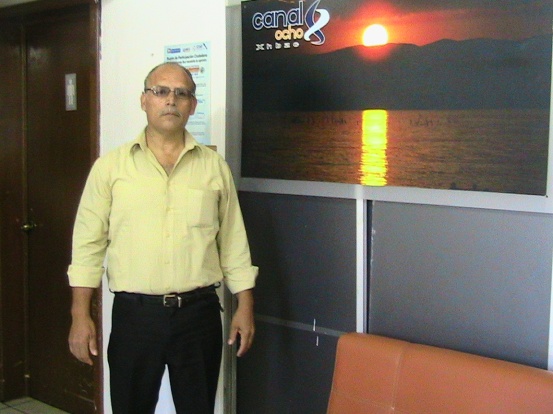 CASIMIRO GARDEA OROZCO
CASIMIRO GARDEA OROZCO
EN LAS OFICINAS DE CANAL 8 DE TELEVISION
EN ESPERA DEL LLAMADO PARA UNA ENTREVISTA
SOBRE ARTE LITICO SUDCALIFORNIANO

MELISSA MARTY NUESTRA BELLEZA LATINA 2008
VISITO LA PAZ, BAJA CALIFORNIA SUR
Y ENTREVISTO A CASIMIRO GARDEA OROZCO
EN LA CASA DEL ARTESANO SUDCALIFORNIANO
PARA AZTECA AMERICA

MELISSA MARTY NUESTRA BELLEZA LATINA 2008
VISITO LA PAZ, BAJA CALIFORNIA SUR
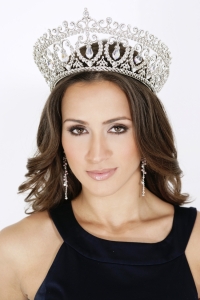
MELISSA MARTY NUESTRA BELLEZA LATINA 2008
VISITO LA PAZ, BAJA CALIFORNIA SUR
ENTREVISTA DE MARISSA MARTY A CASIMIRO GARDEA OROZCO

CACERIA CON ATLATL EN EL CONCHALITO, B.C.S.

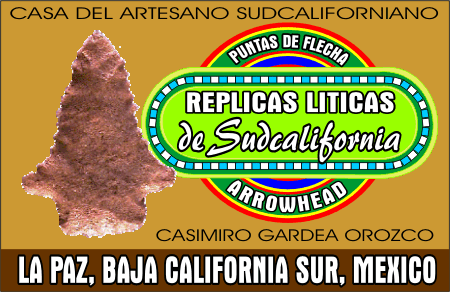

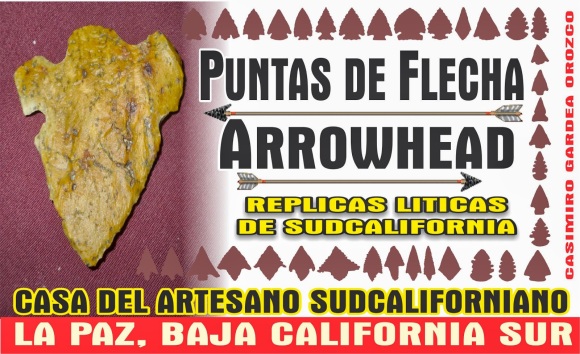
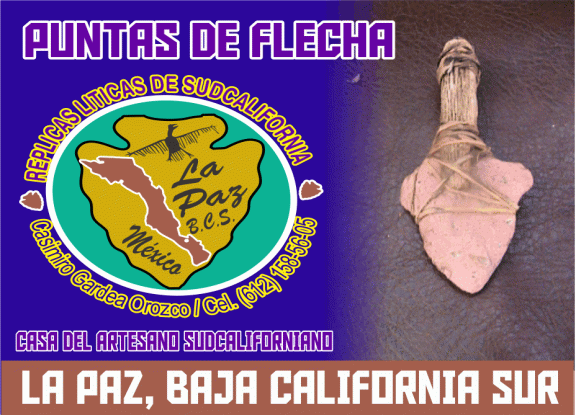
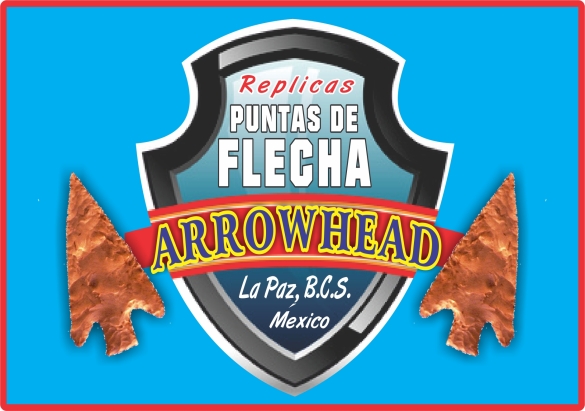
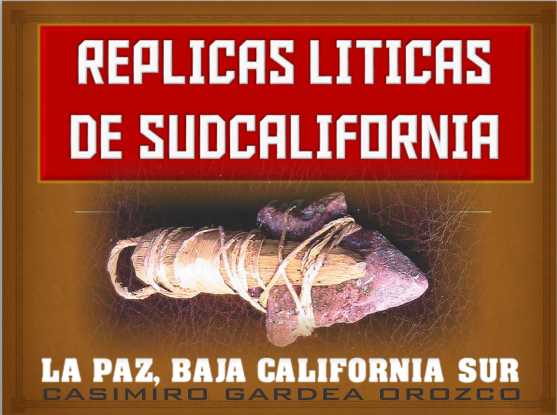



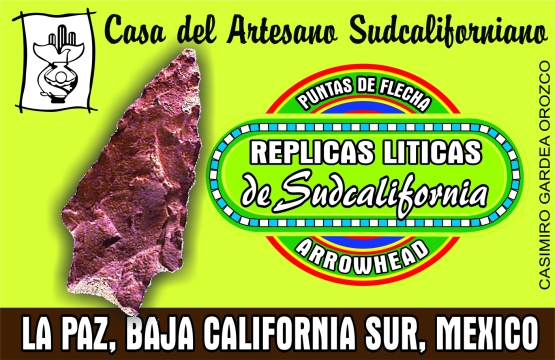

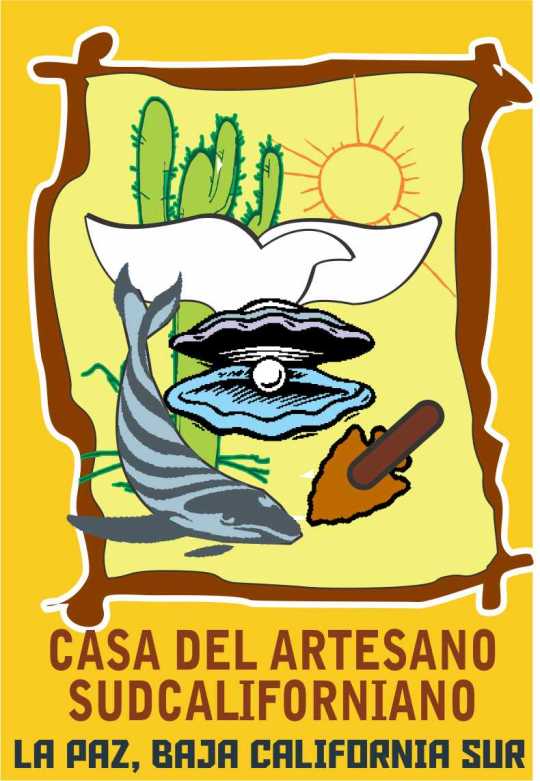
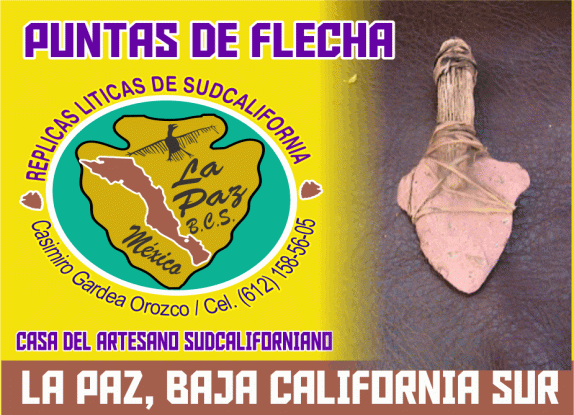
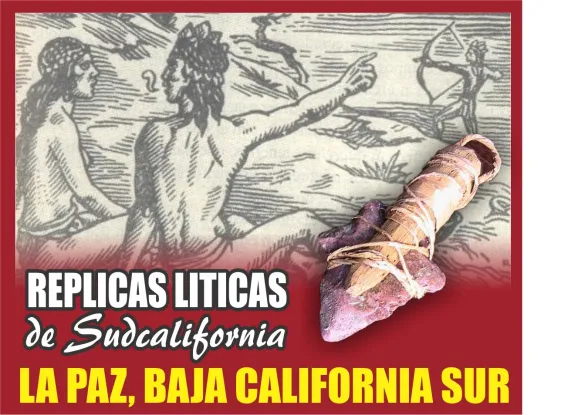
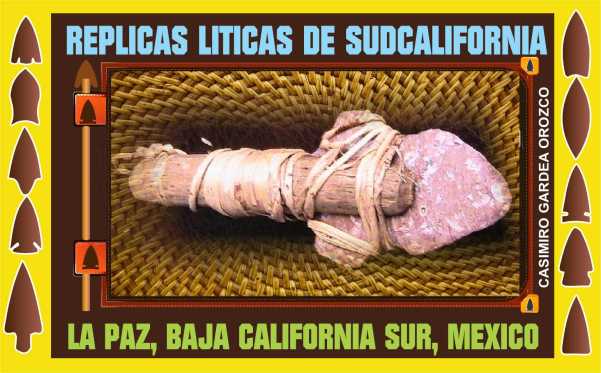
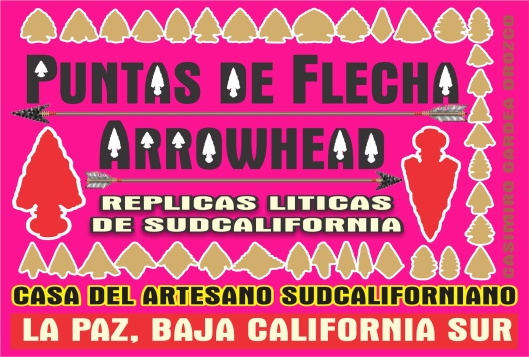
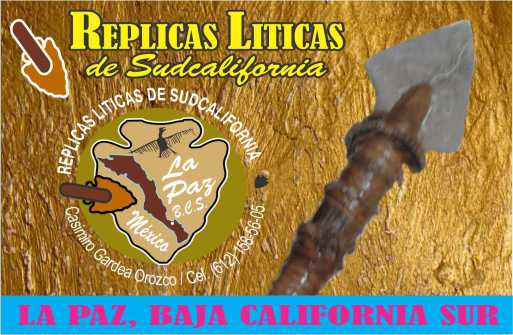

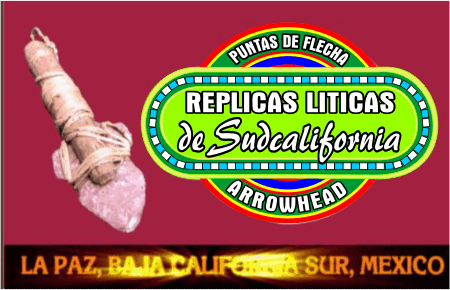



PUNTAS DE FLECHA / ARROWHEAT


PEQUEÑA EXPOSICION DE PIEZAS LITICAS
SIMILARES A LAS EMPLEADAS POR LOS
ANTIGUOS POBLADORES DE
BAJA CALIFORNIA,
GUAYCURAS, PERICUES Y COCHIMIES
 PUNTAS DE LANZA, PUNTAS DE FLECHA, CUCHILLOS,
PUNTAS DE LANZA, PUNTAS DE FLECHA, CUCHILLOS,
HACHAS, ARCOS, ARPONES, ACCESORIOS, ORNAMENTOS,
ANZUELOS, PUNZONES, AGUJAS, ETC
VISITA ESTA PEQUEÑA OBRA
Y RECOMIENDALA PARA PODER
EXPONERLA EN OTROS SITIOS CON MAS PIEZAS LITICAS












 LANZAS
LANZAS

ARETES DE PUNTAS DE FLECHA

COLGANTES DE PUNTAS DE FLECHA
CENTRO DE ARTES POPULARES DE BCS .
FRENTE AL JARDIN VELASCO
 CASIMIRO GARDEA OROZCO
CASIMIRO GARDEA OROZCO
EN LAS OFICINAS DE CANAL 8 DE TELEVISION
EN ESPERA DEL LLAMADO PARA UNA ENTREVISTA
SOBRE ARTE LITICO SUDCALIFORNIANO
MELISSA MARTY NUESTRA BELLEZA LATINA 2008
VISITO LA PAZ, BAJA CALIFORNIA SUR

MELISSA MARTY NUESTRA BELLEZA LATINA 2008
VISITO LA PAZ, BAJA CALIFORNIA SUR
MELISSA MARTY NUESTRA BELLEZA LATINA 2008VISITO LA CASA DEL ARTESANO SUDCALIFORNIANO
EN LA PAZ, BAJA CALIFORNIA SUR, MEXIXO
Y ENTREVISTO A CASIMIRO GARDEA OROZCO
PARA EL PROGRAMA COFEE BREAK DEL CANAL 54
DE AZTECA AMERICA
ENTREVISTA DE MARISSA MARTY A CASIMIRO GARDEA OROZCO
http://youtu.be/AH-OrbzNCNA

CACERIA CON ATLATL EN EL CONCHALITO, B.C.S.





























MELISSA MARTY NUESTRA BELLEZA LATINA 2008
VISITO LA PAZ, BAJA CALIFORNIA SUR
Y ENTREVISTO A CASIMIRO GARDEA OROZCO
PARA AZTECA AMERICA

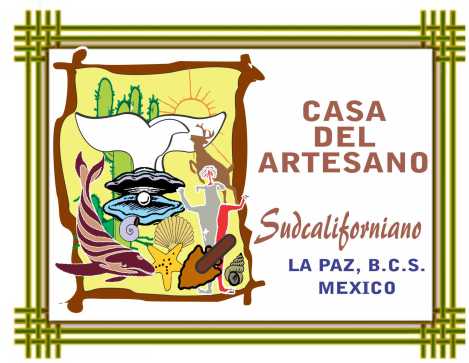
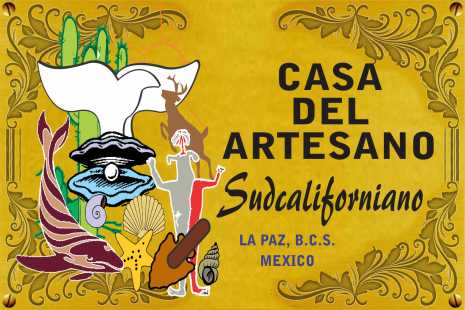

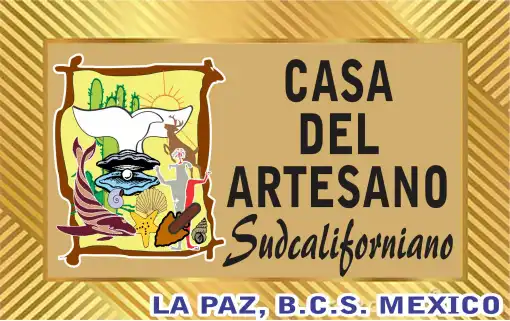
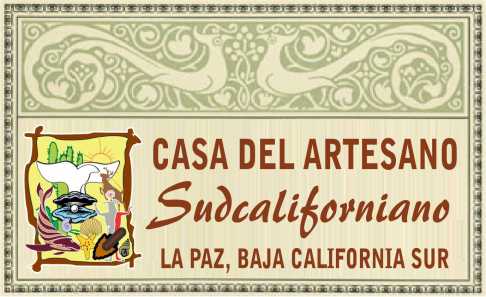




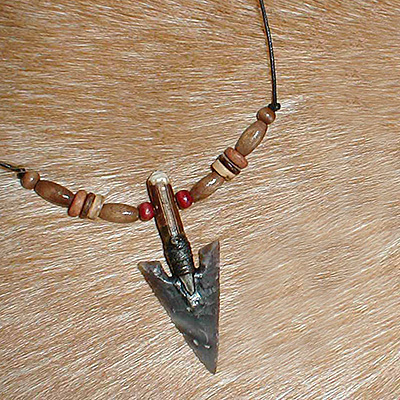
 CASIMIRO GARDEA OROZCO
CASIMIRO GARDEA OROZCO
“El Navegante Californio”





ACTIVIDAD LITICA ACTIVIDAD LITICA ALCOHOLISMO ARTESANIAS AUTOS BAJA CALIFORNIA SUR CABO SAN LUCAS CANCER CANCER DE MAMA CASIMIRO CHIHUAHUA COLIBRI COLIMA ALCOHOLISMO ARTESANIAS AUTOS B BAJA CALIFORNIA SUR BIOTIQUIN CABO SAN LUCAS CANCER CANCER DE MAMA CASIMIRO CHIHUAHUA COLIBRI COLIMA CRISTALES DIABETES DIFERENCIALES DROGADICCION EQUIPALES GARDEA GLAUCOMA GUADALAJARA GUANAJUATO HIPERTENSION IBARRA INFLUENZA L LA PAZ LORETO MEXICO MIMBRE MONTERREY MOTORES MUEBLES NAVEGANTECALIFORNIO NAYARIT PREHISTORIA PROSTATA PUEBLA PUERTAS QUINTANA ROO RATAN S SINALOA SONORA TRANSMISIONES VERACRUZ VIDRIOS YONKE YONQUE YUCATAN
ACAPULCO, ARROWHEAD, ARROWS. LITICAS, ARTESANIAS, AUTOS, BAJA CALIFORNIA SUR, BALANDRA, CABO SAN LUCAS, CANCER, CHIHUAHUA, COCHIMIES, DIABETES, FLECHAS, FONDOS, GUADALAJARA, GUAYCURAS, JAFRA, LA PAZ, LA PAZ B.C.S., LA PAZ BAJA CALIFORNIA SUR, LITICAS, LOS CABOS, MELISSA MARTY, MEXICO, PERICUES, PREHISTORIA, PUNTAS DE FLECHA, RUPESTRES, SINALOA, SONORA, SONORA GUADALAJARA, TEXTURAS, WALLPAPER, BRASIL 2014
3D agua alimentos animación animal Animales Arquitectura Arte artista casa Ciencia Cine/Televisión colores comida cuerpo Curiosidad Diseño escultura esculturas fotografias fotografía fotomontajes Fotos gigante hombre Humor Ilusión Ilusión Optica Juegos Lugares Madera mundo Música naturaleza papel Personajes pintura publicidad retratos robots tierra trabajo vida Video árboles
LOS CABOS, PREHISTORIA, SINALOA, SONORA, TEXTURAS, WALLPAPER








